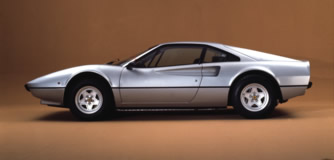|
These included the scalloped door intakes, twin circular rear light assemblies, and the vertical concave rear screen bounded by buttressed sail panels. In essence the shape was a modernisation of that of the
Dino, with enough traces of its predecessor to provide a thread of continuity, earning praise from the press and clients alike.
One feature that was not immediately apparent, was that the 308 GTB was fitted with a
totally fibreglass body, apart from the aluminium front lid. This was the first Ferrari production car to feature fibreglass as a body material, and in fact the idea has not been repeated by the company in large volume
production. However, individual fibreglass panels have been used on a large number of cars from then until now, particularly for the front and rear valances and nose sections. Although the standard of finish was very high, a
return to the more traditional pressed steel and aluminium happened in late 1976 for USA cars, and around mid 1977 for European models. The simplest way to identify a fibreglass bodied car, is to see if there is an indent line
between the front screen pillar and roof panel. If there is one, then the body is fibreglass. USA market cars can be identified by heavier bumper assemblies, and rectangular side marker lights on the wings. An optional deep
front spoiler became available during 1977, which like the standard shallow spoiler was a fibreglass moulding. Like the Dino series, a luggage compartment was provided in the tail of the car behind the engine bay. On the 308
GTB it was accessed by lifting the entire engine cover, which revealed a zip top compartment, whereas the Dino models had a separate lid for the luggage area.
The main European market 308 GTB models had a tubular
chassis with factory type reference F 106 AB 100. Disc brakes, with independent suspension via wishbones, coil springs, and hydraulic shock absorbers, were provided all round, with front and rear anti roll bars. All models were
numbered in the Ferrari odd number road car chassis sequence, with both right and left hand drive available. Production ran from 1975 through to 1980, during which time 2897 examples were produced in the chassis number range
18677 to 34349.
The transversely mid-mounted aluminium V8 engine was essentially of the same design as that used in the 308 GT4 model. It was of a 90 degree configuration, with belt driven twin overhead camshafts per
bank, having a total capacity of 2926cc, with a bore and stroke of 81mm x 71mm, bearing factory type reference F 106 AB 000 for European market cars. The engine was coupled in unit with the all synchromesh five speed
transmission assembly, which was below, and to the rear of the engine's sump. It was fitted with a bank of four twin choke Weber 40 DCNF carburettors, mounted in the centre of the vee, the exact specification of which depended
upon the market. European cars were fitted with dry sump lubrication, whereas Australian, Japanese and USA examples retained the wet sump lubrication system used on the 308 GT4. The claimed power output was 255bhp for European
market models, and 240bhp for US market examples which were fitted with power sapping emission control equipment. A sports exhaust system, and high compression pistons plus high lift camshaft became available as an option.
The 308 GTB was developed into a successful rally car by Michelotto in Padova. Apart from many successes in privateer's hands in national rallies in Italy, there was also success on the international stage courtesy of the
Pozzi Ferrari France team and their most successful driver Jean-Claude Andruet. They had back to back wins in the Tour de France Auto in 1981 and 1982, along with a number of other victories including the 1981 Targa Florio.
Engine
- Type rear, transverse, 90° V8
- Bore/stroke 81 x 71 mm
- Unitary displacement 365.86 cc
- Total displacement 2926.90 cc
- Compression ratio 8.8 : 1
- Maximum power 188 kW (255 hp) at 7700 rpm
- Power per litre 87 hp/l
- Valve actuation twin overhead camshafts per bank, two valves per cylinder
- Fuel feed four Weber 40 DCNF carburettors
- Ignition single spark plug per cylinder, single coil
- Lubrication dry sump
- Clutch single-plate
Chassis
- Frame tubular steel
- Front suspension independent, unequal-length wishbones, coil springs over telescopic shock absorbers, anti-roll bar
- Rear suspension independent, unequal-length wishbones, coil springs over telescopic shock absorbers, anti-roll bar
- Brakes discs
- Transmission 5-speed + reverse
- Steering rack-and-pinion
- Fuel tank capacity 80 litres
- Front tyres 205/70 VR 14
- Rear tyres 205/70 VR 14
Bodywork
- Type two-seater, berlinetta
- Length 4230 mm
- Width 1720 mm
- Height 1120 mm
- Wheelbase 2340 mm
- Front track 1460 mm
- Rear track 1460 mm
- Weight 1090 kg (dry)
Performance
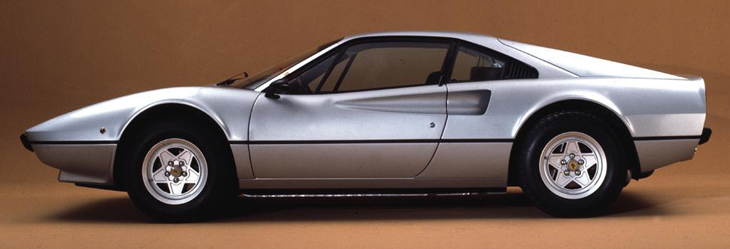
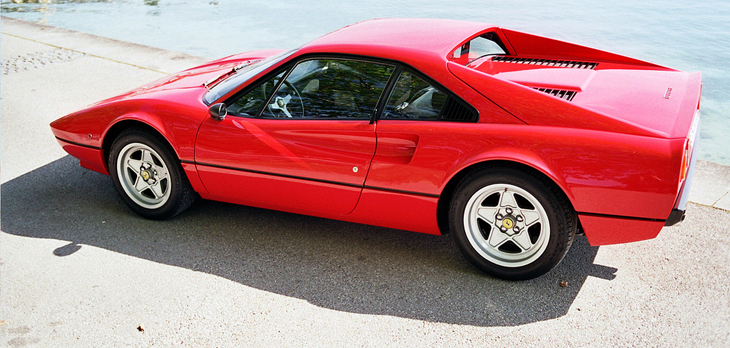
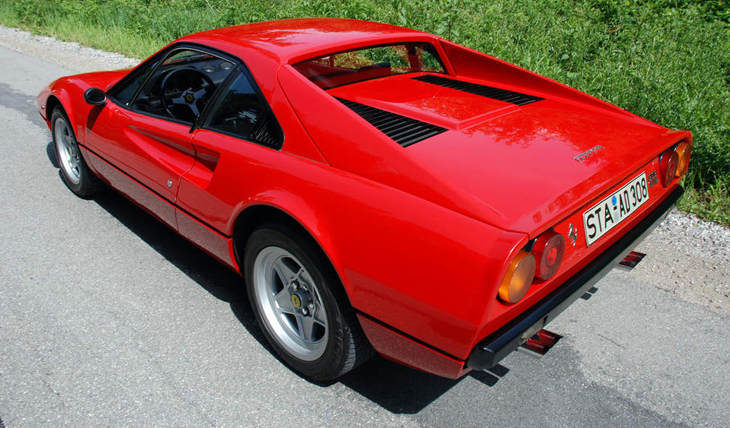
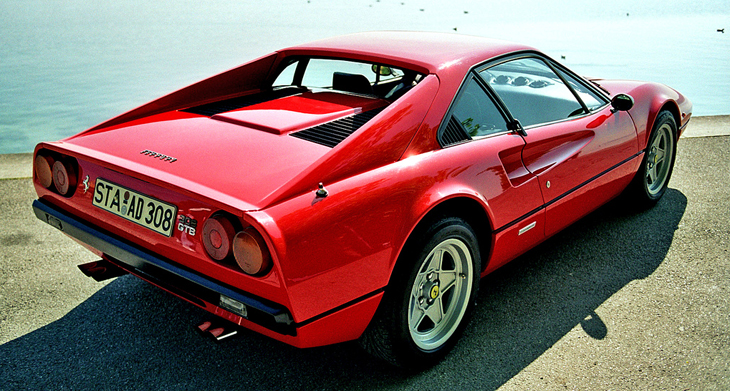
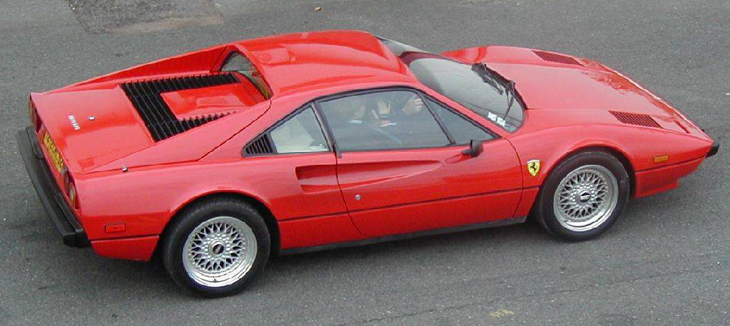
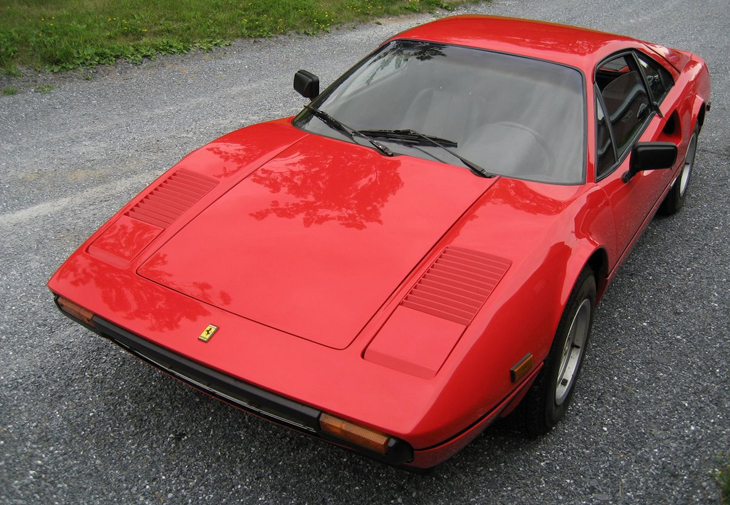
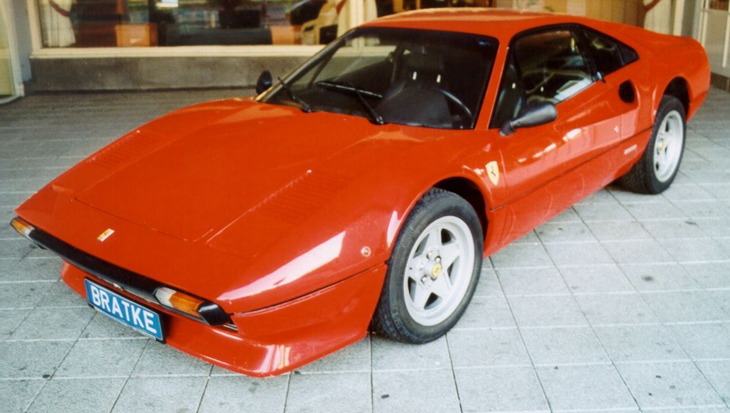
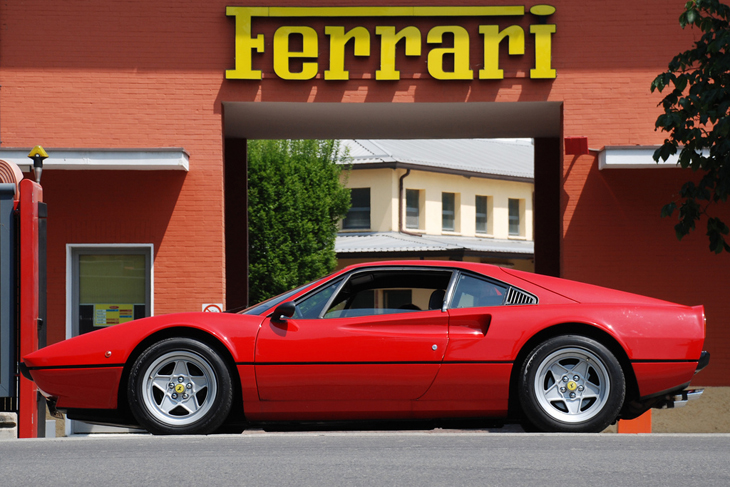
< 1970's
|
